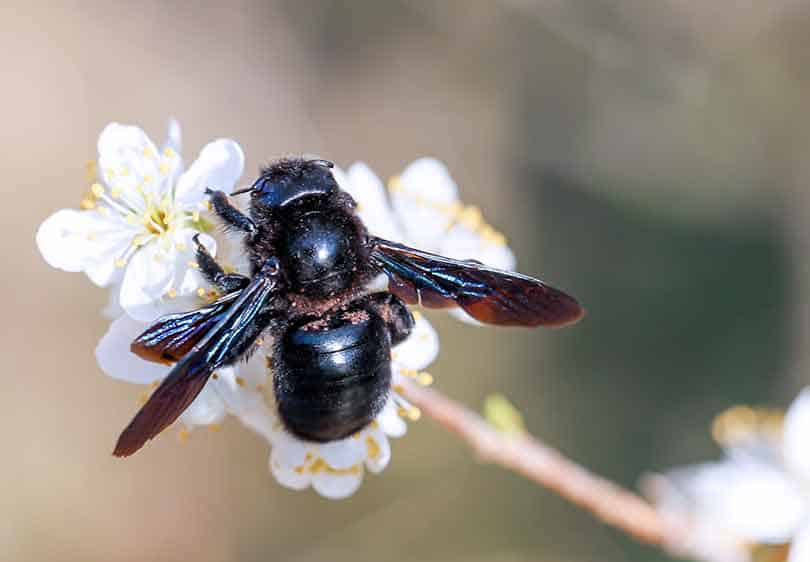Reliable Parasite Control Solutions for Vole Infestations

In the realm of pest control, vole infestations provide a distinct obstacle that demands a strategic strategy. These little rodents, typically incorrect for computer mice, can cause substantial damage to yards, yards, and crops if left uncontrolled. As homeowner grapple with the problem of voles tunneling via their landscapes, the mission for reliable services becomes extremely important. By diving into the complexities of vole actions and discovering a variety of control techniques, an extensive bug management strategy customized to these evasive animals can be crafted. From all-natural repellents to ingenious trapping techniques, the toolbox against vole invasions is multi-faceted. Furthermore, the combination of different strategies under an overarching pest control approach offers an appealing path in the direction of minimizing vole-related difficulties.
Comprehending Vole Behavior
Voles, tiny rodents frequently found in gardens and fields, display distinct habits patterns that are important to understand when carrying out parasite control measures - best vole pest control. These animals are respected miners, developing a considerable network of passages underground where they nest, store food, and seek shelter from killers and severe climate. Voles are herbivores and mostly prey on turfs, bulbs, seeds, and origins, making gardens and areas ideal environments for them
One key habits of voles is their fast price of recreation. Females can provide birth to several trashes every year, with clutter sizes ranging from 3 to six puppies. This high reproductive ability permits vole populations to rapidly multiply, bring about problems if left unattended.
Understanding vole behavior additionally includes acknowledging their patterns of activity and foraging. Voles create surface area runways in verdant locations as they take a trip in between their burrows and food sources. By observing these paths and the locations of burrow entries, bug control specialists can identify high-traffic locations and tactically area catches or deterrents to properly handle vole populaces.
Natural Repellents and Deterrents
With an understanding of vole actions as a structure, exploring natural repellents and deterrents ends up being vital in successfully taking care of vole problems in areas and gardens. Natural repellents supply a sustainable and ecologically pleasant strategy to hindering voles without triggering damage to various other wildlife or the ecosystem. Growing daffodils, crown imperials, or other vole-resistant bulbs can aid maintain voles away as a result of their uninviting preference and scent. In addition, integrating killer urine, such as that of prairie wolves or foxes, around the garden boundary can create an all-natural barrier that indicates risk to voles, urging them to keep away.
Moreover, using castor oil-based repellents can interfere with vole passages as they discover the scent and preference undesirable, prompting them to move. Mulching with products like crushed rock, lava rocks, or crude sand can additionally prevent voles as they do not like excavating with these rough substances. Executing a mix of these natural repellents and deterrents can help successfully take care of vole populations in a safe and lasting way, securing crops and yards from vole damages.
Capturing Strategies for Voles

Snap traps are developed to kill voles instantaneously upon activation. These traps should be put in areas where voles are recognized to travel, such as near burrow entries or along their runways. It is vital to inspect snap catches on a regular basis and deal with any kind of captured voles immediately to guarantee the performance of the capturing process.
Live traps are an extra humane alternative for those who want to record voles without damaging them. Once a vole is captured go to my site in a live catch, it can be safely moved to a different location and launched unharmed. Live traps should be examined often to prevent tension or injury to the recorded voles.
When establishing catches for voles, it is important to consider their habits and routines to enhance the chance of success (vole control service). By utilizing the appropriate capturing strategies, vole populations can be effectively taken care of, minimizing the damages they create to farming and garden locations
Carrying Out Physical Barriers
To further fortify the protection versus vole invasions, the tactical execution of physical obstacles becomes a proactive procedure to protect agricultural and garden locations. Physical obstacles such as cable mesh, equipment cloth, or fencings can be installed underground to avoid voles from burrowing right into fields or yards. Burying these barriers a minimum of 12 to 18 inches deep and angling them outside can effectively discourage voles from tunneling into the secured area. In addition, constructing fences with tiny mesh size at the base can prevent the voles' capability to access the plant life over ground level.
Moreover, using tree guards or trunk covers constructed from steel or plastic can secure tree trunks from vole damages during cold weather when various other food sources are limited. These guards ought to prolong above the anticipated snow line to stop voles from gnawing on the bark. Normal assessment and maintenance of these obstacles are important to ensure their proceeded effectiveness in deterring vole invasions and shielding useful crops and plants.
Integrated Insect Management Approaches
Integrating various bug control i loved this approaches, consisting of organic controls, environment adjustment, and surveillance, develops the basis of efficient Integrated Insect Administration approaches for resolving vole problems. Organic controls entail presenting all-natural predators of voles, such as owls or serpents, to visit homepage the affected area to assist decrease vole populations.
Conclusion
Finally, effective insect control services for vole infestations include recognizing vole actions, utilizing all-natural repellents and deterrents, executing capturing methods, and establishing physical barriers. Integrated parasite management approaches can likewise be used to address vole problems adequately. By integrating these methods, homeowner can efficiently handle and minimize vole populations without the need for extreme pesticide usage.
With an understanding of vole habits as a structure, exploring natural repellents and deterrents ends up being necessary in properly managing vole infestations in fields and gardens. Carrying out a mix of these all-natural repellents and deterrents can assist successfully handle vole populations in a sustainable and safe fashion, safeguarding crops and gardens from vole damages.
Integrating various pest control methods, consisting of biological controls, habitat control, and monitoring, creates the basis of reliable Integrated Bug Management approaches for addressing vole problems. Biological controls entail presenting natural killers of voles, such as serpents or owls, to the afflicted location to assist lower vole populations (best vole pest control).In verdict, efficient pest control options for vole infestations include understanding vole habits, making use of all-natural repellents and deterrents, implementing capturing strategies, and setting up physical barriers